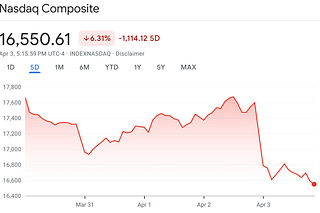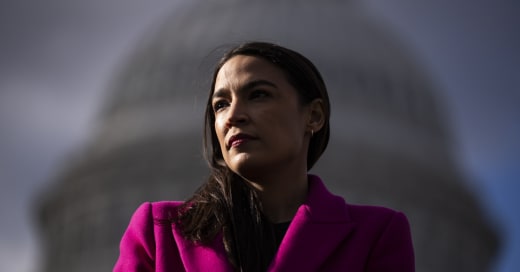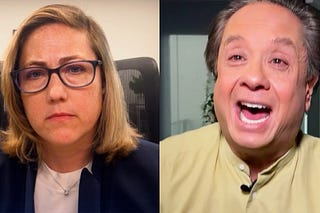
The Beating Heart of the Georgia Indictment
The fake elector scheme is exposed as not a contingency plan but an action plan.

WHILE THE FULTON COUNTY indictment of Donald Trump and 18 others seeks to hold Trump and his enablers accountable for a broad, multifaceted criminal conspiracy to overturn his 2020 election loss in Georgia, at its core is one particular alleged undertaking—the fake elector scheme.
On December 14, 2020, just over a month after Election Day, 59 Republican officials in five states—Arizona, Georgia, Michigan, Nevada, and Wisconsin—signed official-looking documents certifying falsely that they were the “duly elected and qualified Electors” from their respective states, and that they cast their electoral votes for Donald Trump.
There has never been any question about the falsity of the fake certificates. The phony Trump “electors” who signed them were not the “duly elected and qualified Electors” from their respective states. At the time the “certificates” were signed, the governors and top election officials of all five states had already legitimately certified that Joe Biden, not Donald Trump, had won in their states.
There were two key questions that would inevitably shape any legal determination as to whether the fake elector scheme was a criminal act, as opposed to a relatively innocent belt-and-suspenders attempt to preserve rights to challenge the election results, and, if so, who should be held accountable.
First, was the fake elector scheme really just a contingency plan to have the required documentation in place in the unlikely event that a court or state legislature might later determine that Trump, not Biden, had actually won the states?
And second, if the fake elector scheme was in fact a fraudulent action plan designed to overturn the results of the election, not an innocent contingency plan, who was responsible? Was it just the fake electors, or did the scheme go higher up—and if so, how far?
Prior to the Georgia indictment, there was more than enough public information to establish that the fake elector scheme wasn’t merely a contingency plan. It was an action plan. The fraudsters didn’t tuck the phony certificates into a drawer, hoping to have an opportunity to haul them out in the event of a miracle Trump victory in court. To the contrary, they used the fake certificates immediately, actively and affirmatively to create the illusion that there were rival slates of official electors from the five states when, in fact, only Biden had been certified as the winner in all five states. They sent the certificates to the National Archives and Congress and attempted to use them as a pretext for Vice President Mike Pence to kick the election results back to Republican state legislatures.
Also prior to the Georgia indictment, it was clear from statements made by the chairwoman of the Republican National Committee, Ronna McDaniel, that Donald Trump had some degree of knowledge of the scheme and had participated in at least one phone call with one of his legal advisers, John Eastman, “to talk about the importance of the RNC helping the [Trump] campaign gather these contingent electors.”
Still, prior to the Georgia indictment, there appeared to be some wiggle room about the nature of the fake elector scheme and the identity, knowledge, and culpability of those who had their fingerprints on it. For instance, was Trump only a glancing, drive-by participant with something less than a full understanding of what the scheme was all about, or was he a major player—perhaps even the major player—in the scheme?
The Georgia indictment has utterly eliminated whatever wiggle room remained. This was no contingency plan. And it was not executed by low-level state officials acting on their own: Trump and high-level Trump operatives were in it up to their necks.
By my count, approximately 67 of the 161 “overt acts” alleged in the indictment—over 40 percent of them—refer expressly to the fake elector scheme. Each of these acts, in and of itself, is not necessarily a criminal violation. Some are and some aren’t. But they were allegedly acts taken in support of the overall criminal conspiracies, and they fill in the blanks in what was previously known publicly about the fake elector scheme.
Let’s take a look at just a few of them.
A December 11, 2020 email from defendant Kenneth Chesebro—the Trump attorney who was arguably the architect of the fake elector scheme—blows completely out of the water the “it was just a contingency scheme” talking point. Act 58 in the indictment is a straightforward, unambiguous admission that the plan was never to hold the false certifications as a backup contingency in the event of a miracle court decision in Trump’s favor.
Chesebro could not have been more clear about the “purpose” of the plan:
On or about the 11th day of December 2020, KENNETH JOHN CHESEBRO sent an e-mail to Jim DeGraffenreid and stated that “the purpose of having the electoral votes sent in to Congress is to provide the opportunity to debate the election irregularities in Congress, and to keep alive the possibility that the votes could be flipped to Trump.”
Substitute the word “pretext” for “opportunity” and you have what looks like a confession that, despite laughable attempts to dress up a fraudulent undertaking to look like an innocent backup plan, the fake elector scheme was dirty from the start.
Other effective admissions of actively using the fake elector scheme as a pretext to overturn the election abound in the indictment. Here are just a few:
On December 23, 2020, Eastman sent a memo to Chesebro and others that “the fact that we have multiple slates of [phony] electors” “should be enough” to challenge the counting of the actual certified electors on January 6, 2021.
On January 4, 2021, Chesebro “outlined multiple strategies for disrupting and delaying the joint session of Congress on January 6, 2021” by having Pence refuse to count the actual elector votes.
On January 5, 2021, Eastman met with Pence’s chief of staff and counsel “for the purpose of requesting” that Pence “reject the slates of presidential electors from Georgia and certain other states.”
On January 6, 2021, Eastman, speaking at Trump’s rally near the White House, again solicited Pence to disrupt and delay counting the certified votes cast by the duly elected and qualified electors presidential voters from Georgia and elsewhere.
The Georgia indictment also provides the direct link between the low-level state officials who signed the fake elector certificates and Trump himself, not just the likes of Rudy Giuliani, Mark Meadows, Jenna Ellis, John Eastman, Ken Chesebro and a host of other bit players.
Trump allegedly personally importuned Arizona state officials to appoint fake presidential electors, tried to convince the president pro tempore of the Pennsylvania Senate to unlawfully appoint presidential electors, requested that an aide prepare a memorandum outlining a strategy to disrupt and delay certification on January 6, and joined Eastman on the telephone call to McDaniel requesting the RNC’s assistance in gathering the fake electors.
THE FAKE ELECTOR SCHEME has always been the most clear-cut criminal violation arising out of the 2020 presidential election:
It doesn’t rise or fall on trying to figure out whether Trump “really believed” he won the election.
Even if Trump could somehow prove that the Georgia election was in fact stolen—as he rather preposterously promises to do in a press conference next week—it still wouldn’t be a defense to the fake elector scheme: two frauds don’t make a right. The one doesn’t cancel the other.
There’s no First Amendment right to commit fraud.
The idea that Trump or anybody else might have relied on advice of counsel that it’s somehow okay to participate in a fraudulent scheme that included forgery and false certifications of official documents is ludicrous on its face.
Time will tell whether the Fulton County grand jury’s decision to issue such a breathtakingly sweeping indictment was a stroke of genius or a too-heavy lift.
But one thing is already clear: District Attorney Fani Willis has Trump (and others) dead to rights on the fake elector scheme. If that alone had been charged, it would have been enough.
















